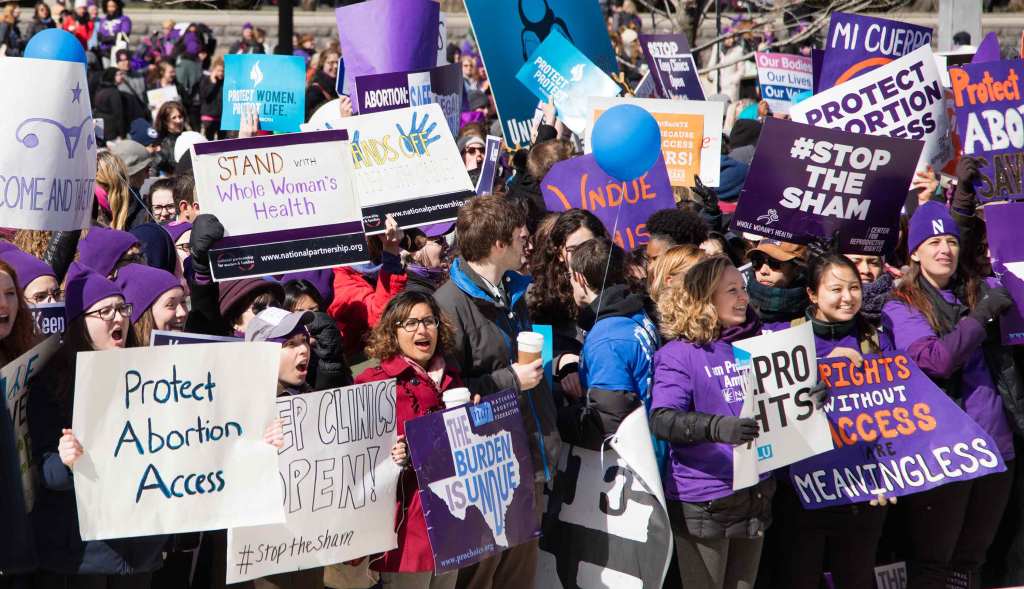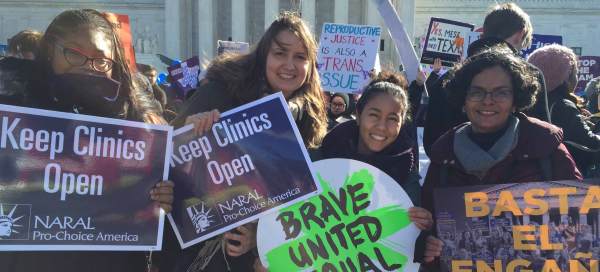 Jeff Malet Photography/Newscom
Jeff Malet Photography/NewscomWhen the Supreme Court struck down a Texas law that required abortion clinics to meet a set of stringent and medically unnecessary provisions, it was a major victory for women’s health and reproductive freedom. The ruling means that government officials cannot create arbitrary barriers to abortion services—like the ones in Texas that required doctors to have admitting privileges at nearby hospitals, and that clinics meet the standards of ambulatory surgical centers. The court rightly declared these restrictions “undue burdens” on abortion rights.
I was thrilled at news of the decision: It’s a huge win for women, eliminating obstacles to our ability to access essential services and make our own health decisions. But what I felt most of all was relief. The truth is, this ruling is no great leap forward. What it does is get us back to the status quo.
Already challenging, that status quo—a limited number of abortion providers, burdensome rules and regulations, widespread misinformation—has become increasingly so during the fight over the Texas law. Since the law was passed in 2013, half of the state’s abortion clinics have closed, diminishing services in ways that have had profound impacts on women’s lives. And while the court has now struck down the rules that led to those closures (which will lead to the voiding of similar laws around the country), they were in effect long enough to take a severe toll, leaving some areas with a major shortage of doctors and clinics. Getting them back will take time and resources, and determination.
Repairing the damage, blocking further harm
Rising to meet the challenge—as they always do—reproductive justice advocates are working not only to repair the damage done by the Texas Law but also to prevent other harmful laws and challenge those that already exist. Among them is the Hyde Amendment. Passed in 1976, the amendment allows states to ban local Medicaid coverage for abortions—making it the only medical procedure that has ever been banned from Medicaid.
Because Medicaid provides health care for low-income people, the Hyde Amendment means that poor women who are already struggling to get by receive no assistance for this one particular procedure. To get an abortion, a woman on Medicaid must scrape together already meager resources to pay for it out of pocket. Unable to find the money, many women resort to desperate and unsafe measures to terminate their pregnancies. That’s because denying coverage for abortion doesn’t make a woman less likely to get one: It just makes it more difficult and less safe for her to access.
This is an issue of inequality. Women of color are more likely to live in poverty and rely on Medicaid, and so they are disproportionately affected by the Hyde Amendment. Women who have higher incomes are more likely to have insurance that does cover abortions—and even if they lack sufficient coverage, they are more likely to have a safety net that enables them to pay for the procedure. Increasingly, organizations and networks like the All Above All coalition are challenging the Hyde Amendment, and pushing for legislation that explicitly protects a woman’s right to make her own decisions about pregnancy.
Beyond playing defense
Fighting laws like the one invalidated by the Supreme Court means playing defense. It’s essential work, and reproductive justice advocates have had a lot of practice at it: The Center for Reproductive Rights argued and won the most recent Supreme Court case, and will continue to fight efforts to curtail abortion rights in regional, federal, and local courts in the US, and worldwide. This kind of work also takes vast amounts of resources—resources advocates could use to make proactive gains in abortion rights if they didn’t have to spend so much time fending off threats to those rights.
But there is progress on that front, too. By underscoring that reproductive justice is about more than abortion, efforts like Forward Together’s Strong Families initiative are building powerful alliances across social movements, built on the understanding that no issue exists in isolation.
A large majority of people—of all races and ethnicities—support a women’s right to abortion. But that’s not always the story we hear. And so organizations like the National Latina Institute for Reproductive Health and the National Black Women’s Reproductive Justice Agenda are working to dispel myths about their communities’ view of abortion, and build a broad base of support. A recent survey of Latino/a voters found that 8 in 10 believe that a woman should be able to make her own personal decisions about abortion without politicians interfering; 65 percent believe the increased restrictions on abortion in recent years are a step in the wrong direction. Other research found that 8 in 10 African Americans say abortion should be legal in at least some circumstances—with large majorities agreeing that decisions about abortion should be left to the woman involved.
These organizations—and many others—are raising awareness of the importance of safe, accessible abortion services, and engaging communities to change the system. They are working to help men and women make their voices heard, and make sure their interests are represented—especially throughout the US South and Midwest, where restrictions are particularly widespread and severe. Together, these diverse, deeply committed leaders are working to realize a new status quo: a world where reproductive freedom is a fact, not a privilege.

